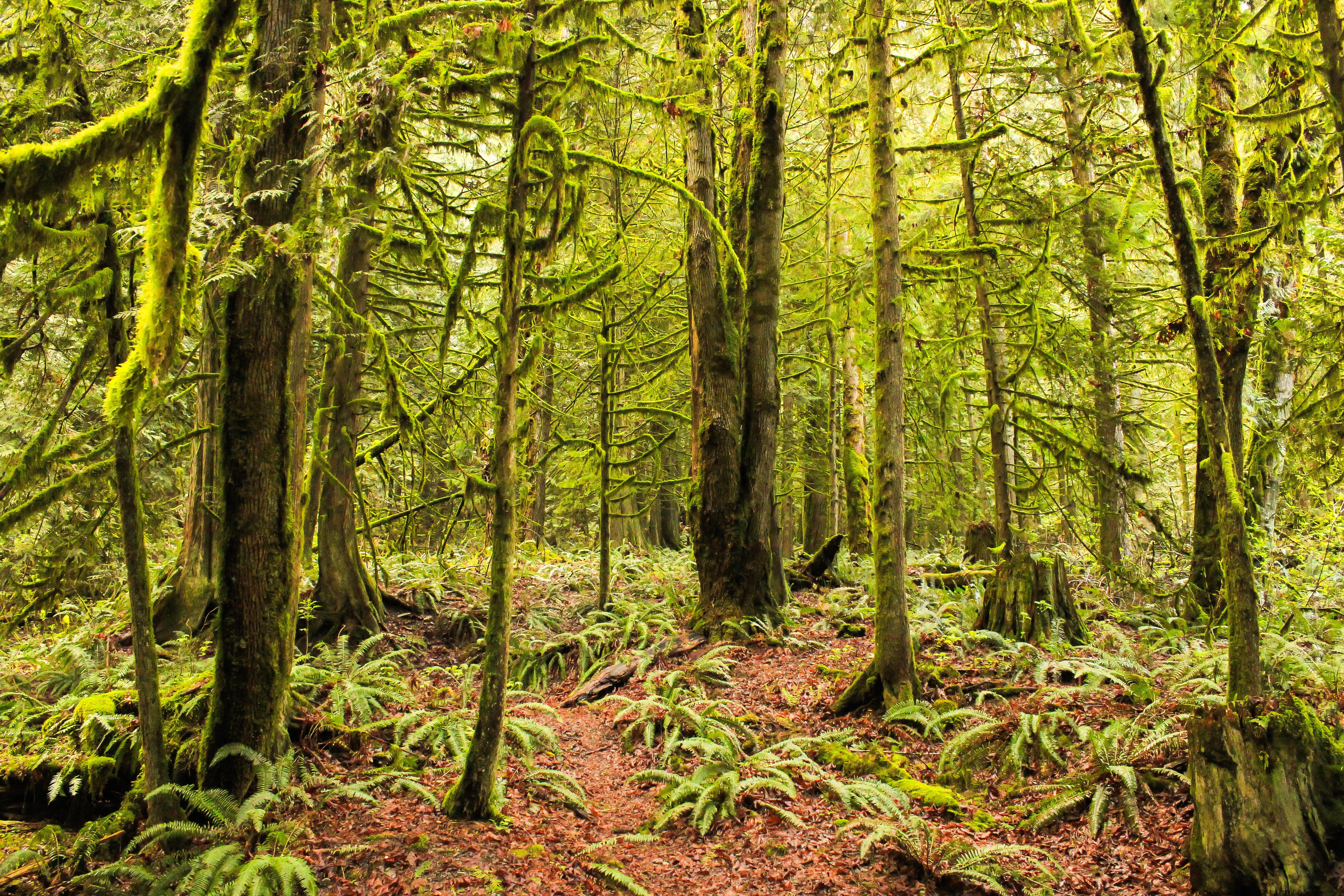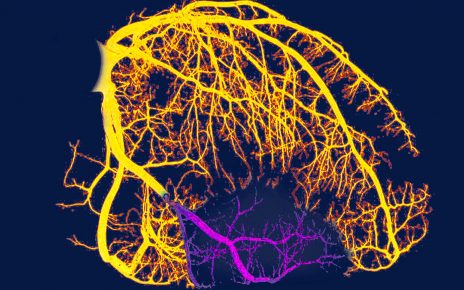
The tips of tree roots are intertwined with filaments of fungus, forming a hidden underground network that seems to benefit both organisms: the filaments, known as hyphae, break down minerals from the soil that trees can then take into their roots, while the fungus gets a steady source of sugar from the trees.
More poetically, research has hinted that these connections—known as mycorrhizal networks—can extend between trees, enabling one tree to transfer resources belowground to another. Some researchers even argue that trees are cooperating, with older trees passing resources to seedlings and nurturing them as a parent might.
This idea of forests as cooperative, caring places has caught on both in the scientific literature and popular culture, notably in the 2022 book Finding the Mother Tree: Discovering the Wisdom of the Forest, by forest ecologist Suzanne Simard of the University of British Columbia. There is even a punny popular name for the phenomenon: the “wood-wide web.”
A new analysis published in Nature Ecology & Evolution, however, argues that the evidence for mycorrhizal networks facilitating tree cooperation is not as strong as the popular story would suggest. It’s not that relationships between trees and fungi don’t exist, says co-author Justine Karst, an ecologist who studies mycorrhizal networks at the University of Alberta. Rather, in many cases, suggestive evidence or studies with many caveats have been taken as more definitive than they really are. “We don’t want to kill anyone’s joy or curiosity or wonder about the forest, but we just want to tamp down on some of the misinformation,” Karst says.
The problem with researching mycorrhizal networks is that they’re very delicate: dig up a root, and you’ve destroyed the very web of fungi and wood you wanted to study. That makes it hard to tell if a particular fungus is really connecting any two trees. The best way to get around the problem is to sample fungi from different locations, sequence their genetic information, and make a map of where genetically identical fungi are growing. This is a tremendous amount of work, Karst says, and she and her co-authors could find only five such studies across just two forest types, comprising only two tree species and three types of fungi.
Making these studies even more challenging is the ephemeral nature of fungal networks. Fungi can grow as individuals after being split, says Melanie Jones, a plant biologist at the University of British Columbia and a co-author of the new analysis. Even genetic samples provide only a snapshot and can’t reveal whether the bits of fungi collected at two different trees are still actually connected. They may have been severed by part of the fungus dying or by something taking a bite out of it. “It’s a very thorny issue,” Jones says.
These limitations raise questions about how widespread mycorrhizal networks are, and how long they last.
It is clear that substances from one tree can end up being taken up by a neighboring tree in the forest. Researchers can test this by providing one tree with a chemical compound tagged with a certain marker. In a 2016 study in a Swiss forest, researchers sprayed some trees’ leaves with a particular isotope of carbon and found that isotope showed up in unsprayed neighbors. However, it’s not clear that fungi are necessarily responsible for this transfer, Jones says. Resources can also move directly root-to-root and through the soil, and it’s very difficult to separate out those pathways in a real forest. Researchers try to set up barriers between trees so that fungal hyphae and roots can’t connect them, leaving only the soil pathway as a possible means of transmission. But these barriers themselves (usually made of fine mesh) can affect tree growth, complicating the picture.
To test the effect of mycorrhizal networks, researchers also often set up wide-mesh barriers, allowing fungi but not tree roots through. But Karst and Jones contend that in such cases, some researchers have rarely checked to make sure a connected mycorrhizal network has actually formed. The strongest evidence for trees sending resources via fungal pathways versus roots or soil came from one 2008 study in which mesh was used to allow only fungus, but not roots, to connect Ponderosa pine seedlings to older pines in a real forest, Karst and Jones say. The researchers then cut several older pines and treated the cut trunks with dyed water. The dye showed up in the seedlings, despite the lack of connections between roots, indicating that fungal hyphae had done the transfer.
That is suggestive of trees transferring water, Jones says, but still leaves open the question: Does any of this matter for the seedlings? If mycorrhizal networks have evolved to allow older trees to help their younger kin survive, the resource transfer must improve seedling survival. There, too, Karst and Jones claim some of the evidence is shaky. “In the really well-controlled experiments, less than 20 percent show that the seedlings performed better,” Jones says. In the remaining 80 percent, she adds, the hyphae-connected seedlings performed either equivalently or worse than the ones cut off from the fungal network.
Meanwhile, the idea that trees send underground warnings to one another about herbivorous insects or other dangers is predicated on a single greenhouse study in which a Douglas fir and a Ponderosa pine were connected only by fungal networks. When researchers stressed the Douglas fir by exposing it to insects, the Ponderosa pine also started pumping out defense chemicals. However, the effect disappeared when the firs and pines were connected by both roots and fungi, which is what happens in the wild. “The main message is that this hasn’t been tested in a forest,” Karst says. “When you see those pictures of ancient forests, big trees and they’re passing signals to each other, it just hasn’t been tested.”
The idea of forests as cooperative, rather than competitive, also conflicts with the fundamentals of natural selection, says Kathryn Flinn, a plant community ecologist at Baldwin Wallace University in Ohio, who was not involved in the new analysis. The argument for cooperation is that trees in a healthy forest survive better than trees in a sickly one, but such instances of group natural selection are rare in the wild, Flinn says. And in forests, individual selection favors competition, with particular trees vying for resources in a way that would prevent any group benefits. “I find this whole controversy really interesting because it’s an example of people wanting to project their own values onto nature and or wanting to see in nature a model for human behavior,” Flinn says.
Simard, whose research on forests has provided much of the basis for the arguments that trees cooperate, declined to answer specific questions about the new analysis but said in a statement that she stands by her research. “Forests provide crucial support to life on our planet. Reducing ecosystems to their individual parts hinders us from understanding and appreciating the emergent relationships and behaviors that make these complex ecological systems thrive,” she says. “For decades, a compartmentalized approach has hindered us from better understanding why forests help regulate global climate and harbor such rich biodiversity. Applying reductionist science to complex systems accelerates the exploitation and degradation of forests worldwide.”
Karst, Jones and their study co-author Jason Hoeksema of the University of Mississippi agreed that a reductionist view of the forest—in which individual parts of the network are tested individually rather than in context—is not the only way to study ecology. However, these reductionist studies have been used to make big claims about mycorrhizal networks, they said, adding that they wanted to focus their analysis on what the results really showed. They limited their analysis to studies conducted in real forests, they said, because these are most relevant to the real world.
Karst says that she and her colleagues are not intending to put a chill on research in this area, but to push it into new types of forests and encourage investigation of the most promising areas, such as water transfer between trees. For her part, Karst believes there may still be truth to the idea that mycorrhizal networks are involved in at least some tree-to-tree networking, and better-designed experiments could get at that truth. “I want to have another go at it,” Karst says.



